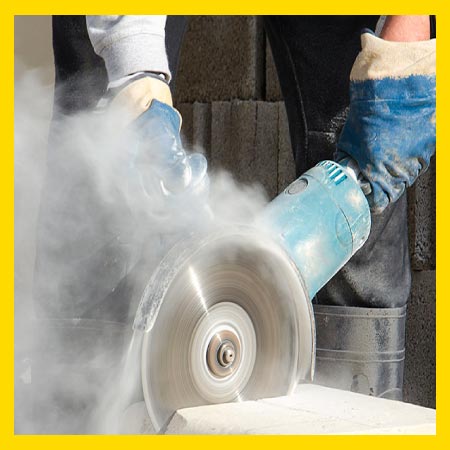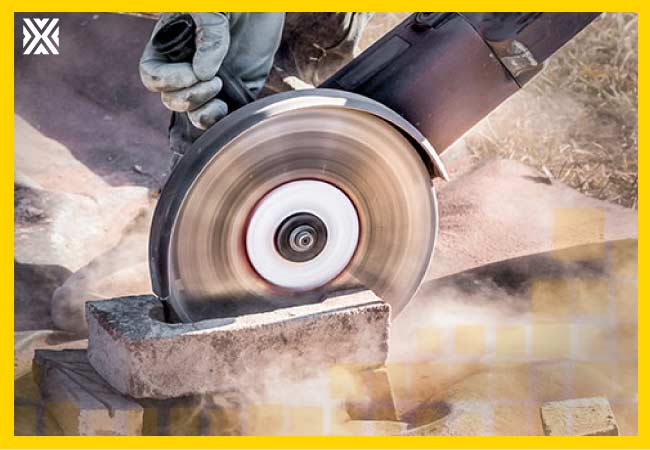Currency
November 01, 2020

What makes dust so harmful for construction workers is that it’s a combination of particles from various materials used on project sites. These fine grains could be heavy metals, asbestos, pollen, silica and much more.
If inhaled, this dust can induce a number of health issues, such as heart strain, reduced lung capacity and irritation of the eyes, nose, throat and lungs. Silica, a small crystalline substance that’s more than 100 times smaller than ordinary sand, can also cause lung cancer, kidney disease, chronic obstructive pulmonary disease (COPD) and silicosis, an incurable lung illness that can be fatal.
In the U.S., around 2.3 million people get exposed to silica at work. When construction workers breathe in this material, along with any type of dust, they may feel like they’re experiencing allergies or a mild cold. However, as the irritants settle into the lungs, they can damage the surrounding tissue. Some diseases come on quickly, but most take a long time to develop. If workers don’t detect the issue early, it becomes harder to treat.
Mitigating dust on the worksite is something that organizations must do, as it’s a matter that affects the health of the people working in and living near construction areas. Discover some of the top dust mitigation strategies that project managers can incorporate into their plans.

All employees should have personal protective equipment (PPE) and proper training on how to use it to limit exposure to dust. Filtering respirators and dust masks can offer extra protection against breathing in harmful particles. The National Institute for Occupational Safety and Health (NIOSH) recommends half-face particulate respirators with N95 filters or better to limit exposure to silica, as these models offer improved efficiency over earlier dust and mist filters.
Workers should also wear safety goggles when irritants are present, as they’re the only type of protection that creates a seal around the eyes. These goggles can incorporate prescription lenses mounted behind the protective material for those requiring vision correction. While this PPE should have adequate ventilation, it must protect against dust entry.
Excessive vehicle movement can lead to dust generation on construction sites. To keep the debris to a minimum, site managers should restrict access points. They should also create paved parking areas to limit the spots where vehicles can create dust. Beyond vehicular access, construction companies can limit activity during high winds, as continuing tasks will only accelerate particulate problems.
Another standard method for dust control during construction is to water down the site. While project managers can always hope for rain, they should also opt for water trucks to spray down the area and keep dust suppressed. Depending on the scope of the project, workers should apply water at least three times a day.
Water is an extremely effective and economical technique compared to many others. Plus, it offers excellent insurance for those that work in fire-prone areas. Most truck models offer two water tank capacities — 2,000 and 4,000 gallons. Be sure to track water usage, however, as excess can lead to potential environmental erosion.
Project managers can find certain chemical dust suppressants, though the performance of these products will depend on the application method, surface moisture content, site precipitation, drainage and more. Most of these suppressants are designed for areas with medium traffic and surfaced with gravel.
Calcium chloride, for example, is a salt that can absorb moisture from the air without becoming a liquid. The result is a binding effect on particles, preventing dust. This chemical works best during the spring season when the road still has moisture from rains. During times of low humidity, a water truck may need to soak the area for the calcium chloride to be effective.
Site managers can offer protection against dust with the right preparation materials. For example, plastic sheeting on the floors and ceilings of the workspace can contain particles. Sticky plastic sheeting is another option, viable for hard surfaces and carpets. Accessory kits with zipper closures are also useful, as they keep the particles contained to one area.
When outside, workers can apply mulch and vegetation to the soil to prevent dust, a method that's considered eco-friendly. Another way to control harmful inhalants is to properly store and cover materials, especially when carried on trucks.
Another technique that can help with dust control is to use barriers on construction sites, such as board or snow fences, crate walls or bales of hay. These barriers play a significant role in controlling airflow, preventing gusts from blowing soil particulates off the ground. They can also stop erosion.
Experts believe that more than 500 construction workers die from exposure to silica dust each year. Other irritants, too, such as those from wood, gypsum, limestone and marble, can lead to serious illness. To keep workers safe, construction companies must utilize dust mitigation methods, such as the ones above, on every project site.
If inhaled, this dust can induce a number of health issues, such as heart strain, reduced lung capacity and irritation of the eyes, nose, throat and lungs. Silica, a small crystalline substance that’s more than 100 times smaller than ordinary sand, can also cause lung cancer, kidney disease, chronic obstructive pulmonary disease (COPD) and silicosis, an incurable lung illness that can be fatal.
In the U.S., around 2.3 million people get exposed to silica at work. When construction workers breathe in this material, along with any type of dust, they may feel like they’re experiencing allergies or a mild cold. However, as the irritants settle into the lungs, they can damage the surrounding tissue. Some diseases come on quickly, but most take a long time to develop. If workers don’t detect the issue early, it becomes harder to treat.
Mitigating dust on the worksite is something that organizations must do, as it’s a matter that affects the health of the people working in and living near construction areas. Discover some of the top dust mitigation strategies that project managers can incorporate into their plans.

Personal protective equipment
All employees should have personal protective equipment (PPE) and proper training on how to use it to limit exposure to dust. Filtering respirators and dust masks can offer extra protection against breathing in harmful particles. The National Institute for Occupational Safety and Health (NIOSH) recommends half-face particulate respirators with N95 filters or better to limit exposure to silica, as these models offer improved efficiency over earlier dust and mist filters.
Workers should also wear safety goggles when irritants are present, as they’re the only type of protection that creates a seal around the eyes. These goggles can incorporate prescription lenses mounted behind the protective material for those requiring vision correction. While this PPE should have adequate ventilation, it must protect against dust entry.
Restricted site access
Excessive vehicle movement can lead to dust generation on construction sites. To keep the debris to a minimum, site managers should restrict access points. They should also create paved parking areas to limit the spots where vehicles can create dust. Beyond vehicular access, construction companies can limit activity during high winds, as continuing tasks will only accelerate particulate problems.
Water applications via trucks
Another standard method for dust control during construction is to water down the site. While project managers can always hope for rain, they should also opt for water trucks to spray down the area and keep dust suppressed. Depending on the scope of the project, workers should apply water at least three times a day.
Water is an extremely effective and economical technique compared to many others. Plus, it offers excellent insurance for those that work in fire-prone areas. Most truck models offer two water tank capacities — 2,000 and 4,000 gallons. Be sure to track water usage, however, as excess can lead to potential environmental erosion.
Chemical suppression products
Project managers can find certain chemical dust suppressants, though the performance of these products will depend on the application method, surface moisture content, site precipitation, drainage and more. Most of these suppressants are designed for areas with medium traffic and surfaced with gravel.
Calcium chloride, for example, is a salt that can absorb moisture from the air without becoming a liquid. The result is a binding effect on particles, preventing dust. This chemical works best during the spring season when the road still has moisture from rains. During times of low humidity, a water truck may need to soak the area for the calcium chloride to be effective.
Pre-work preparation materials
Site managers can offer protection against dust with the right preparation materials. For example, plastic sheeting on the floors and ceilings of the workspace can contain particles. Sticky plastic sheeting is another option, viable for hard surfaces and carpets. Accessory kits with zipper closures are also useful, as they keep the particles contained to one area.
When outside, workers can apply mulch and vegetation to the soil to prevent dust, a method that's considered eco-friendly. Another way to control harmful inhalants is to properly store and cover materials, especially when carried on trucks.
Natural and block barriers
Another technique that can help with dust control is to use barriers on construction sites, such as board or snow fences, crate walls or bales of hay. These barriers play a significant role in controlling airflow, preventing gusts from blowing soil particulates off the ground. They can also stop erosion.
How to reduce dust and protect construction workers
Experts believe that more than 500 construction workers die from exposure to silica dust each year. Other irritants, too, such as those from wood, gypsum, limestone and marble, can lead to serious illness. To keep workers safe, construction companies must utilize dust mitigation methods, such as the ones above, on every project site.









